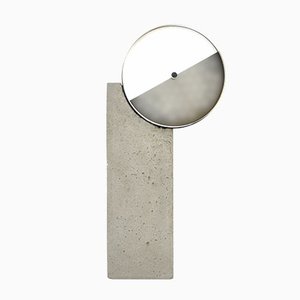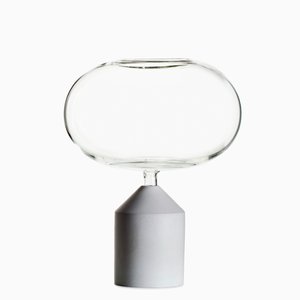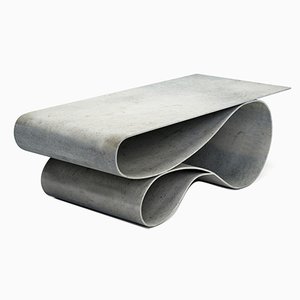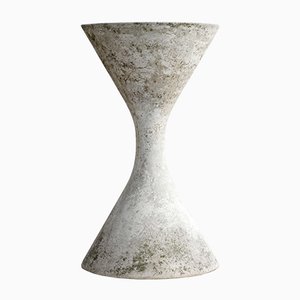A primer in Brutalist architecture
The Bold & the Beautiful
-
Nakagin Capsule Tower by Kisho Kurokawa, Shimbashi, Tokyo, Japan (1970-72)
Photo © Nakagin Capsule Tower
-
Hunstanton School by Peter & Alison Smithson, Norwich, Norfolk, England (1949-1954)
Photo © The Architect's Journal
-
St. John's Abby by Marcel Breuer, Collegeville, Minnesota (1961)
Photo © Minnesorta Historical Society
-
Church of St Francis of Sales by Marcel Breuer, Muskegon, Michigan (1964-1966, with Herbert Beckhard)
Photo © Photo Hedrich Blessing; Chicago Historical Society
-
University Illinois Chicago Circle Campus by Walter Netsch (1965)
Photo © UIC
-
Habitat 67 by Moshe Sadie, built as a pavilion for Expo 67 in Montreal (1967)
Photo © Matias Garabedian
-
University of Massachusetts Dartmouth by Paul Rudolph (1968-1972)
Photo © UMass Dartmouth
-
Geisel Library by William Pereira & Associates at the University of California, San Diego (1968-70)
Photo © University of California, San Diego
-
Institute Of Scientific Research in Kiev, Ukraine (ca. 1971)
Photo © O.Ranchukov
-
Atlanta Central Public Library by Marcel Breuer (1977-1980, with Hamilton P. Smith)
Photo © Architectural Photography of Atlanta; Marcel Breuer Papers, American Art Archives, Washington, D.C
Rugged and idiosyncratic; masterfully engineered; executed in unforgiving materials. That’s Brutalism at its best. Though the movement’s origins can be traced back nearly a century, Brutalism has of late found a new generation of die-hard fans.
As Brutalist’s fandom grows, however, so too does the debate surrounding the expanding application of the Brutalist label. Extending from its architectural origins to cover an increasingly expansive array of design objects produced between the 1960s and today—many of which have just recently, for the first time, become highly sought after by collectors and interior designers—the broadened definition evokes thrill in some design lovers and chagrin in the hearts of more traditional devotees.
In this two-part story, Pamono examines the hot-topic of Brutalism, beginning here with a brief history of the term’s evolution within the architectural realm. This backstory is key, we believe, to understanding the larger context in which this design conversation spins.
Architecture that bears the Brutalist label is rooted in Le Corbusier’s post-1930s, monumentally sculptural masterpieces realized in raw concrete—or béton brut as he famously called it. Thanks to Le Corbusier’s prolific work, there are numerous examples to choose from, but perhaps the most often cited is the 1954 Unité d'Habitation in Marseille. His first large-scale architectural project, this massive pubic housing complex was designed to house approximately 1600 residents, all of whom had been displaced during the WWII bombings in France. Envisioned as a revolutionary, communal city within a city, replete with kindergarten, medical facilities, hotel, gym, shopping, and more, the imposing, 18-story concrete block structure, situated atop stout pilotis, calls to mind an aboveground ocean liner. With it, Le Corbusier championed raw concrete’s affordability as well as its adaptability and structural potential.
In the post-World War II era, as a generation of young architects began to adopt Le Corbusier’s aesthetic purism but without his ideological dogma, Swedish architect Hans Asplund (son of Gunnar Asplund) teasingly coined the term nybrutalism for these new buildings radically devoid of decoration. In the English-speaking world, though, it was British critic Reyner Banham who popularized the term in the 1950s, when he wrote about the work Alison and Peter Smithson. Banham offered this quote from the visionary young couple to describe their austere work: “It is our intention… to have the structure exposed entirely, without interior finishes wherever practicable. The contractor should aim at a high standard of basic construction, as in a small warehouse.”
What started out as a term of reproach quickly became a badge of pride. Yes, proponents of Brutalist architecture agreed; their work was indeed brutal. That was their intent. And for quite a while, between the 1950s and ’70s, numerous governments, corporations, and patrons around the world, from Brazil to Tokyo, bestowed major commissions upon these avant-garde architects, like Moshe Safdie’s dramatic, Tetris-like creation, Habitat 67 in Montreal, or the renowned Geisel Library at the University of California by William Pereira. For a world recovering from the trauma of World War II, Brutalism was a refreshingly honest visual language—and, of course, the affordable price tags didn’t hurt either. Indeed, there were even entire campuses that were built in the Brutalist style, like Paul Rudolph’s design for the University of Massachusetts Dartmouth, or similar projects by Walter Netsch in Chicago.
Then the backlash came. By the 1980s, when the conservative values articulated by Reagan and Thatcher hit the mainstream, Brutalist architecture was widely maligned, with mounting campaigns calling for the demolition of these structures. The style became associated with Eastern Bloc ideologies and failing, low-income housing developments. Add to this the high maintenance costs—raw concrete may look imposing but is actually rather vulnerable to degradation—which meant that within a decade or two many of the original Brutalist buildings looked tired. In the minds of many, Brutalism became emblematic of poverty and social decay.
Brutalism did have its defenders though, with defiant voices, particularly in architecture circles, damning the erasure and demolition of these landmark buildings, some going so far as to brand it civic vandalism. It is human nature, perhaps, to take things for granted; it is not until we are faced with loss that we begin to value what is right under our noses. And so it was that the high profile vitriol of anti-Brutalist campaigners—like Prince Charles, who once favorably compared the rubble left after Luftwaffe air raids to Brutalist buildings—paradoxically ignited public interest in preserving these gentle giants of postwar architecture.
Fast forward to today, and we are seeing a true renaissance of dedicated Brutalist ardor. Within the last year, we’ve seen the New York Times and other major publications rhapsodize about Brutalism’s Instagram-ready, black-and-white photogenicity; the cult podcast 99% Invisible issued a plea for the conservation of unloved Brutalist landmarks; and hip galleries in Berlin and beyond have celebrated the poetic beauty of this rough-and-ready style.
*Read Part II of our Brutalism story to see how the architectural term infiltrated the decorative arts—often in mysterious ways that don’t easily square with the origins.
*And for more more Brutalist fun, you can find Brutalist Playground on view at Vitra Design Museum through April 30, 2017.
More to Love
Animal Farm No. 2 Floor Lamp by Tom Strala

Sapo Dining Table by Sergio & Giorgio Saporiti for Saporiti, 1972

Syzygy Occultation Table Lamp from OS ∆ OOS

Gold Colouring Table from OS ∆ OOS

Black Colouring Table from OS ∆ OOS

In the Air Plate by FX Balléry

In the Air Vase by FX Balléry

In the Air Bowl by FX Balléry

Whorl Coffee Table in Concrete Canvas by Neal Aronowitz

Swiss Planter by Willy Guhl for Eternit, 1960s












 Habitat 67 by Moshe Sadie, built as a pavilion for Expo 67 in Montreal (1967)
Image © Nora Vass
Habitat 67 by Moshe Sadie, built as a pavilion for Expo 67 in Montreal (1967)
Image © Nora Vass
 Rooftop playground at the Churchill Gardens Estate in Pimlico London (1978)
Photo © John Donat, RIBA Library Photographs Collection
Rooftop playground at the Churchill Gardens Estate in Pimlico London (1978)
Photo © John Donat, RIBA Library Photographs Collection